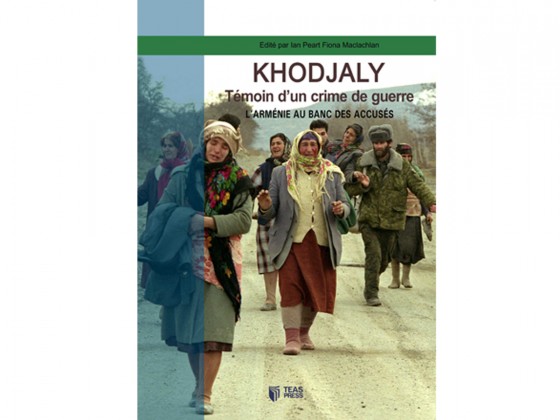
TEAS Press published “Khojaly Witness of a war crime – Armenia in the Dock” book in French, The European Azerbaijan Society said.
The book was first published in English in 2014 by ITHACA PRESS in London and in Russian in 2015 by Vestnik in St. Petersburg.
The initiator of the international awareness campaign “Justice for Khojaly”, Vice President of the Heydar Aliyev Foundation Leyla Aliyeva wrote the foreword to the book.
Published as a part of this campaign, the book is the first edition documenting the February 26, 1992 Khojaly events based on initial sources to have been published in English in the West.
This book is the first collection of witness statements from Khojaly massacre survivors interviewed by western authors.
The book includes articles as well as scientific researches published in Russian and western media.
The book also includes the reports of international human rights organizations (Memorial and Human rights Watch/Helsinki) on Khojaly genocide.
Rare photos of foreign photo correspondents were also included to the book.
The materials included in the collection were acquired from international media (The Washington Post, Le Monde, The Times, Trud and Komsomolskaya Pravda Russian newspapers) and published for the first time.
“Khojaly Witness of a war crime – Armenia in the Dock” book is a report reflecting objective situation regarding the Khojaly genocide and one of rare editions thoroughly informing the international community in this regard.
On Feb. 25-26, 1992, the Armenian military, together with the 366th infantry regiment of Soviet troops stationed in Khankendi, committed genocide against the population of the Azerbaijani town of Khojaly. Among those 613 killed in the massacre, there were 63 children, 106 women and 70 old people.
Eight families were totally exterminated, 130 children lost one parent and 25 children lost both. A total of 487 civilians became disabled as a result of the onslaught. Some 1,275 innocent residents were taken hostage, while the fate of 150 people still remains unknown.
The event became the largest massacre in the course of Nagorno-Karabakh conflict.
The conflict between the two South Caucasus countries began in 1988 when Armenia made territorial claims against Azerbaijan. As a result of the ensuing war, in 1992 Armenian armed forces occupied 20 percent of Azerbaijan, including the Nagorno-Karabakh region and seven surrounding districts.
Trend
